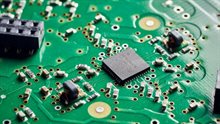6G is going to work for us!
In the FNS partner interviews, we feature a partner every week. Our partners give insight into developments and innovations within their organisation and their role at 6G Future Network Services.
In a recent conversation with Ágnes Mika and David Prinsloo of ASTRON, we discussed the institute's involvement in FNS and emerging developments in 6G technology. As partners in these initiatives, ASTRON is taking a leading role in integrating advanced network technologies with their expertise in radio astronomy.
Mission and background of ASTRON
ASTRON, the Netherlands Institute for Radio Astronomy, operates from Dwingeloo, a location synonymous with astronomical research. Part of NWO's institutes organisation, ASTRON is responsible for designing, developing and operating innovative instruments and techniques for astronomical research. ASTRON has telescope facilities in Westerbork, including the Westerbork Synthesis Radio Telescope (WSRT), and the LOw Frequency ARray (LOFAR) telescope. LOFAR consists of a core area near Exloo with an extensive network of antenna stations spread across the Netherlands and European partner countries.
David, who is deeply rooted in the Netherlands despite his South African background, began by explaining ASTRON's mission: "Our mission is to advance discoveries in radio astronomy. We do this by developing new and innovative technologies, operating world-class radio astronomy facilities and conducting fundamental astronomical research."
Astronomy and 6G
The conversation naturally moved on to how ASTRON's expertise coincides with FNS and the development of 6G technology. What makes ASTRON and 6G developments unique is the synergy that emerges despite the seemingly disparate fields in which they operate. Historically, the worlds of astronomy and network technology could be seen as divergent or even opposing fields. Yet it turns out that these fields complement each other extremely well. David gave the example of ASTRON's focus on receiving radio signals: "We create sensitive receivers. We have more than 110,000 receivers in Europe and a big challenge is to synchronise them all. This synchronisation is crucial for accurately detecting and processing radio signals, a technology that is also relevant for 6G communication."

ASTRON and 6G: friend or foe ASTRON plays an important role in the development and use of advanced radio technologies and there is a growing overlap between technologies used in astronomy and those used in communication networks such as 6G. David explains this further: "For example, consider cooling technology. Computers consume energy, generate heat and require cooling. Air cooling is the most common method, but liquid cooling can significantly reduce energy consumption. Radio astronomy is extremely data-intensive and cooling of our data centres is required, both from a sustainability and cost perspective. The technology is widely applicable." David adds: "We constantly strive to maximise the use of our technologies for society and share our excitement about our discoveries with the public. In the area of 6G, there is a lot of overlap in technology development. But actually, we are also arch-enemies. We are doing our best to maximise the use of the electromagnetic spectrum to enable our science, while wireless is using more and more of the available space."
Concrete activities in FNS
One of Astron's activities within FNS (in Program Line 1) is the development of a prototype that enables the integration of 6G technology into their astronomical research. "We are currently working on a prototype that exploits 6G network (timing) technology to optimise data transfer between our telescopes and data centres," Agnes says. This prototype will be extensively tested in the relevant field labs to ensure reliability and performance. "We plan several test phases in which we will use the prototype in realistic scenarios to identify and address any technical challenges early on."
Agnes also spoke about the collaboration between ASTRON and Bosch within the programme, in particular the development of an advanced chip technology. She specifically mentioned the development of an advanced chip that will play a crucial role in synchronising the antennas. "This chip - with an electronic module for timing - will help us process data more efficiently and faster, and we would like to start using this chip in our prototype."

Collaborations for developments
The actual development of systems is usually achieved through close collaboration with partners in universities and industry. David adds: "Our collaboration with universities gives us access to cutting-edge research and talented scientists who contribute to our projects. We always have research questions, both scientific and more technical in nature. It helps us make choices about whether we are on the right track. Working with students is therefore great."
Conclusion
ASTRON's collaboration with FNS and their role in the development of 6G technology illustrates the synergy between advanced network capabilities and scientific research. Their contributions to technological innovation and collaboration with other industrial and scientific partners make them a valuable player in the broader field of wireless communications. "I like the technological collaboration within FNS best," David concludes. "Through FNS, we connect with partners who also have similar technologies. We really want to have more impact on society. FNS makes this possible. I am very excited about this. 6G is going to work for us!"
